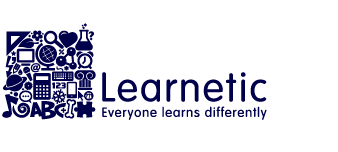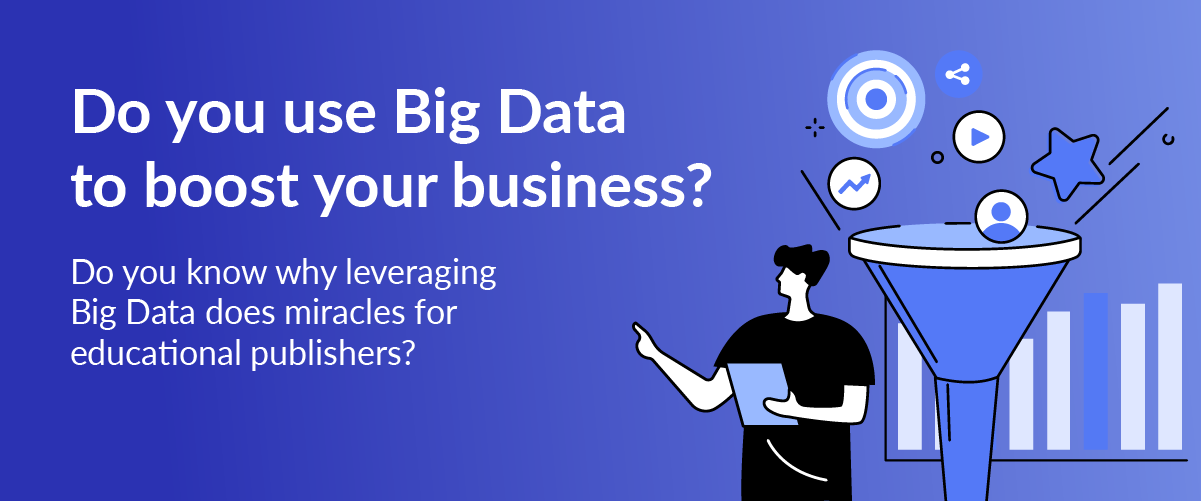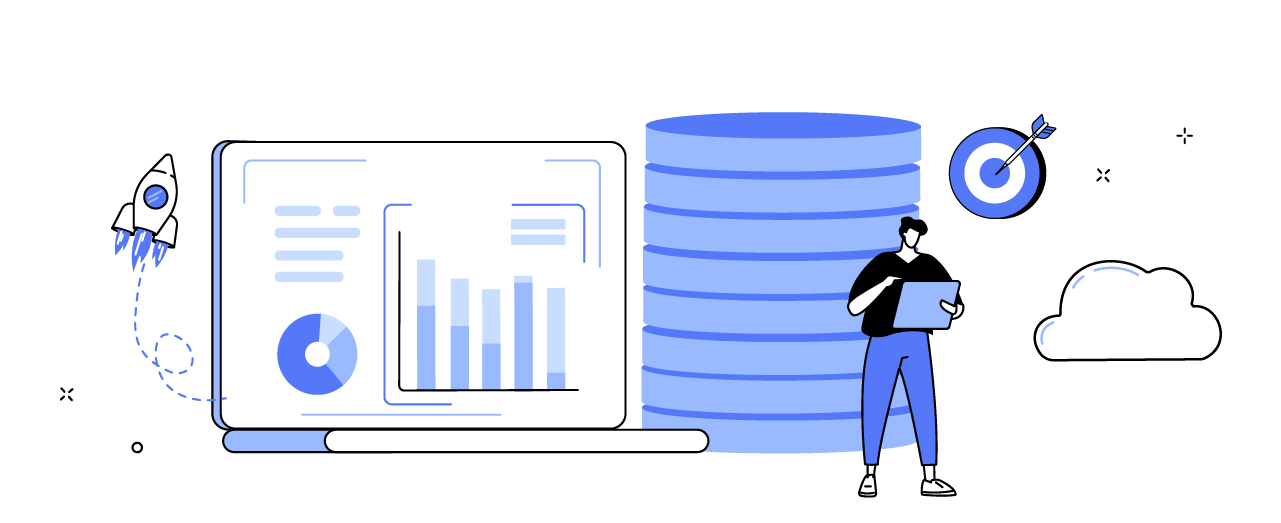How can K12 publishers leverage Big Data to boost their business?
Since Big Data analysis found its way to digital publishing, it became clear that it’s an invaluable source of information the publishers have never had before. It’s chance to understand users and meet their exact needs and expectations. Big Data analysis is a miracle to educational publishers – how can you use its full potential?
Modern tools for eCourse production and LMS delivery platforms provide a plethora of data that can have an invaluable influence on a publisher’s product line. Consumer product companies have long been monitoring such streams of data; now, leveraging Big Data has also found its place in digital publishing. Big Data analysis should be the publisher’s day-to-day work, as it allows for multiple small-scale case studies leading to constant improvement. This is a chance to understand users and properly meet their needs and expectations.
What data is available?
The examples are endless, because we can apply the term “Big Data” to all the data produced during the use of an eLearning solution.
We can look for patterns in users’ behavior: teachers, students, school administrators, and any other players undertaking actions in the eLearning environment.
We can check the effectiveness of delivered courses, e.g. number of mistakes, or time spent or a course bounce rate.
We can create user profiles, analyze the intensity of use in various regions and cities or check the proportions between course usage at home or in school.
This data not only provides information about the delivered digital solutions, but may also tell us a lot about related products, such as the print line. In short, the analysis allows for multiple small-scale case studies leading to constant improvement.
There have been many academic discussions about Big Data, but how can it actually be used in practice in K12 publishing? Here are some practical examples of how the gathered data influences the quality of the courses, user loyalty, sales results, precision of marketing actions, and much more.
Fine-tuning the eCourses
The most common way of utilizing Big Data by a publisher is regular eCourse analysis and improvement to increase effectiveness gradually. The publishers or editors responsible for the creation of digital textbooks can assess whether their materials present the initial concepts and ideas clearly and effectively.
They may find out how difficult it is for students to understand concepts, which particular part of an electronic page or activity creates a problem for learners or is not challenging enough. Analyzing user interactions with a course allows finding relevant pages or even single activities to improve. It consists of looking for exercises with the highest number of mistakes, requests for hints or lessons with the highest bounce rates.
A huge advantage here is that instead of waiting for the next edition of a paper-based textbook, publishers can make all corrections and improvements practically in real-time and instantly check the results of their actions. What is more, such constant perfection may, after a while, increase user satisfaction with the materials, and thus lead to greater loyalty and openness to the publisher’s other offerings.
But course effectiveness is not the end of the story, as there are other areas ripe for potential improvement. For example, a publisher can verify whether a proposed amount of teaching materials is provided accurately for a particular period of time. Some of the publisher’s print and digital textbooks are divided into parts that may, for instance, reflect a school semester. The second part of the course may be opened only two weeks after the semester start date – this could mean that the first part has been overloaded.
Moreover, verifying eCourse structure is a great best practice. We can look for patterns within our eCourse – whether it is used in accordance with the created structure or the sequence of utilizing certain topics is noticeably different from the one proposed. Maybe there are topics that are omitted by a substantial number of users? There is much space for improvement here, and Big Data provides us with what we need to get this done.
Comparing methods
A publisher often has two (or even more) methods in the portfolio created for the same subject and the same educational level. Big Data is an important source of information to compare these methods, find their strengths and better position them against each other. Such analysis is particularly important when making strategic decisions concerning the discontinuation of an offering.
Maybe one method is used more frequently at school and the other one is more often utilized outside the classroom? When it comes to the level of difficulty – is one method more difficult than the other? The popularity of methods may vary depending on a region or can be correlated with using other methods provided for a different subject or an educational level
Publishers can also test effectiveness. Sometimes, different approaches are applied in the methods to explain the same subject matter: a publisher can check which one is more effective. This can also apply to one eLearning course. If the used tools and platform allow implementing changes easily in a course, a publisher can apply different teaching approaches to one topic and check students’ behavior and results. This leads to identifying a more effective pedagogy.
Rationalizing production
If an eCourse contains elements that are complicated to produce, it is possible to estimate their contribution and importance to the whole course. How heavily are they used in comparison with other course modules? Are they used as home assignments or supplementary exercises at the end of a lesson? And finally, how has replacing a chosen module with a simpler one influenced user’s behavior? The advantages of using Big Data surely outweigh the effort.
Enhancing marketing and sales
Knowledge about users is a key for effective communication – building knowledge of user profiles on the basis of observed behavior in the context of e.g. region, educational level, and even gender helps to segment customers and adjust our methods. Recognition of users’ preferences and the strengths of offered solutions can be achieved through identifying the most popular lessons or resources.
This knowledge is a huge aid in building proper market communication. A publisher knows which values to underline, what is truly appreciated by a user, which problems the solution can solve. Going even further – a publisher knows which lessons will be well received when presenting a course.
The knowledge of the user’s behavior and preferences is a powerful tool for enhancing the sales of print products. Imagine a case where a publisher provides digital courses on an LMS platform to schools and sells print textbooks and other supplementary products to schools. There may be schools that use digital courses from this particular publisher, but buy print products from the competition. The field sales forces may be provided with information relating to what digital courses are most appreciated by school teachers. This can help them to interest a school in acquiring a relevant print product.
The knowledge of the user’s behavior and preferences is a powerful tool for enhancing the sales of print products. Imagine a case where a publisher provides digital courses on an LMS platform to schools and sells print textbooks and other supplementary products to schools. There may be schools that use digital courses from this particular publisher, but buy print products from the competition. The field sales forces may be provided with information relating to what digital courses are most appreciated by school teachers. This can help them to interest a school in acquiring a relevant print product.
SUMMARY: Leveraging Big Data made possible
These examples are definitely not the end of the list. A publisher can explore the applications of Big Data and identify those that best suit their business, bringing together their business model with their pedagogical mission. In some cases, the data provided by the standard web analytical tools like Google Analytics may be of use, but they do not provide all the information required by the specifics of educational publishing. In order to achieve the possibilities mentioned above, it is necessary to have a perfect match of an LMS and highly interactive eContent deployed in it.
Not every LMS or Authoring Tool available on the market provide access to the data necessary to capture the information mentioned above.
The unique combination of the commercially available mCourser eLearning Platform and the interactive content created with the mAuthor ePublishing Development Platform offers all the capabilities described above. All data generated by mAuthor’s eContent (and optionally by the enhanced marketing and sales in Learnetic’s mCourser LMS) is stored in a Google BigQuery database, making it fully accessible by a variety of tools (such as Google DataStudio, Tableau, QlikView, etc). This enables a publisher to perform a thorough analysis and attractive visualizations of relevant data.
Our experts are eager to discuss how to assess the nuances of your publishing process and the richness of your resources.








